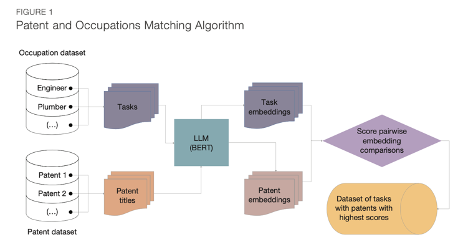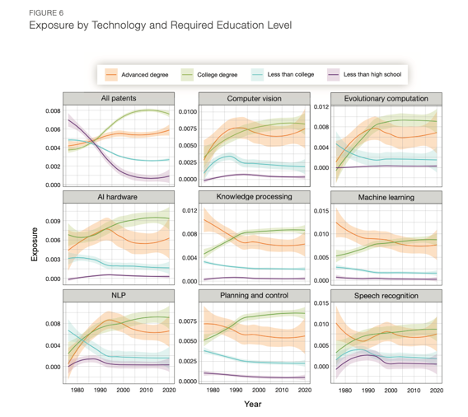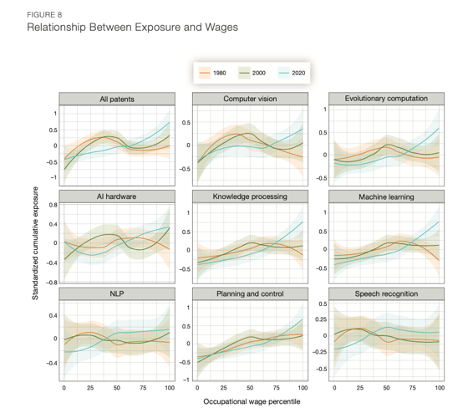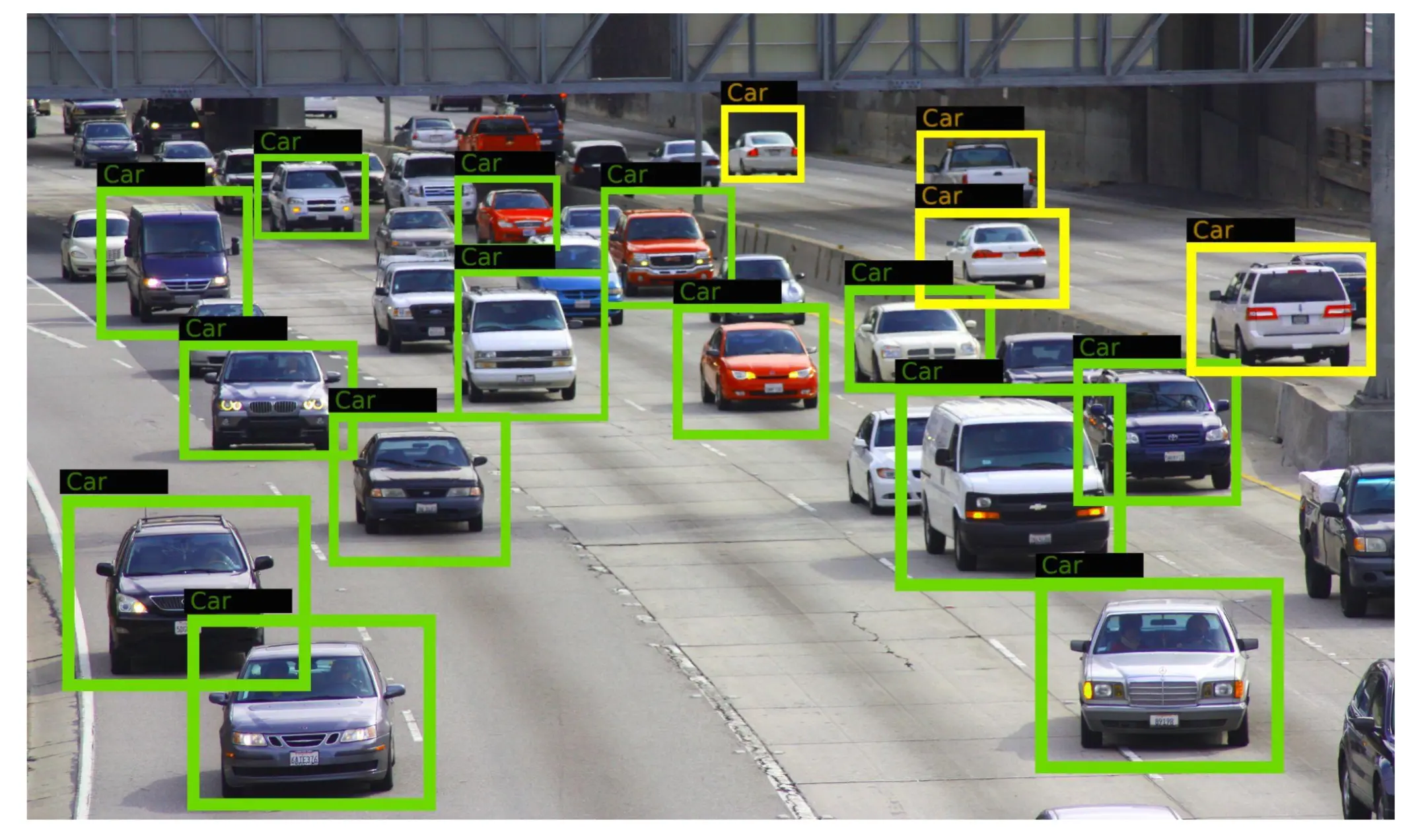- Publication: RAND
- Publication Date: October 11, 2023
- Organizations mentioned: O*NET, USPTO (United States Patent and Trademark Office), PatentsView, RAND Education and Labor, RAND Corporation
- Publication Authors: Tobias Sytsma, Éder M. Sousa
- Technical background required: Medium
- Estimated read time (original text): 90 minutes
- Sentiment score: 55%, Neutral (100% being most positive)
This report explores the exposure of various U.S. occupations to technology patents, particularly those involving AI, and examines how the level of exposure has varied across occupation groups, time frames, and technology categories since 1989.
TLDR
Goal:
The RAND Corporation’s report, “Artificial Intelligence and the Labor Force: A Data-Driven Approach to Identifying Exposed Occupations,” investigates the relationship between occupational exposure to AI-related technologies, wages, and employment. This study aims to understand how AI exposure impacts different segments of the workforce and labor markets.
Methodology:
- The study involved matching around 8 million patents from the USPTO dataset with almost 18,000 unique tasks from the O*NET database, leveraging NLP algorithms.
- This process used embeddings (numeric representations of text data) and transformers architecture, which helps in understanding the context of words and their relationships to each other.
- The methodology focused on evaluating the degree of exposure of various occupations to AI technologies, using criteria like sentence similarity to gauge the alignment between patent data and job tasks.
Key Findings:
- By 2020, nearly all occupations had been exposed to technology patents involving AI, but the level of exposure varied across occupation groups and technology categories.
- Occupations that require more education, offer higher wages, and involve more routine tasks are more exposed to AI technologies.
- The nature of occupational exposure to technology patents has changed over time, with higher education and wage occupations becoming more exposed in recent decades.
- There is a positive correlation between technology exposure and employment growth in some instances, but this correlation is negative for more routine occupations.
- Tasks performed less frequently are more exposed to patents, indicating a shift in the nature of work tasks influenced by AI and technology patents.
Recommendations:
- The report implies a need for continuous monitoring of AI’s impact on the labor market, especially for occupations with high exposure to AI technologies.
- It suggests that policy makers and educators should focus on preparing the workforce for an AI-influenced job market, particularly in areas requiring higher education and routine tasks.
- There is a recommendation for businesses to consider the evolving nature of job tasks and the skills required in an AI-driven environment.
- The report highlights the importance of developing strategies to mitigate the negative impacts of AI on employment in more routine occupations and recommends further research to understand the long-term implications of AI.
Thinking critically
Implications:
- As AI technologies continue to grow, they could lead to the automation of a broad range of tasks, potentially displacing jobs, especially in routine-intensive occupations. However, this also opens avenues for job creation in less routine-intensive and more cognitive roles.
- The exposure of various occupations to AI technology may drive changes in wage distribution and educational requirements.
- The varied exposure to AI across different occupations could lead to a greater focus on developing AI technologies that complement human skills rather than replacing jobs.
Alternative Perspectives:
- The methodology of matching patents to occupational tasks may overlook some subtleties in how AI affects different jobs.
- The study’s conclusion that AI exposure does not necessarily translate into job displacement may be overly optimistic.
- The assumption that AI will lead to the creation of new job opportunities may not materialize as quickly or effectively as anticipated.
AI Predictions:
- As AI technologies continue to evolve, there will likely be an increased demand for workers with AI skills and expertise in less routine-intensive occupations.
- The application of AI in automating routine tasks could lead to the emergence of new roles and tasks within occupations, particularly those that require complex problem-solving, creativity, and social intelligence.
- Over the next several decades, the influence of AI on the labor market is predicted to be transformative yet uneven across different sectors.
Glossary
- O*NET Dataset: A comprehensive database managed by the U.S. Department of Labor, detailing job duties, skills, education, training requirements, earnings, and job outlook for various occupations.
- USPTO Datasets: Refers to datasets from the United States Patent and Trademark Office, containing around 8 million patents, used for analyzing technology exposure in occupations.
- PatentsView: An open data platform providing tools and data on patents to support research and insights into invention and innovation.
- AIPD (Artificial Intelligence Patent Dataset): A dataset categorizing AI patents into various types, used for analyzing the exposure of different occupations to AI technologies.
- ACS (American Community Survey): A survey by the U.S. Census Bureau that provides detailed demographic, social, economic, and housing data.
- BERT (Bidirectional Encoder Representations from Transformers): A machine learning model used for understanding the context and meaning of words in sentences.
- GPT-4 (Generative Pre-trained Transformer 4): A large language model known for its ability to process and generate human-like text.
- LLM (Large Language Model): Refers to advanced AI models trained on vast datasets, capable of performing a variety of language-based tasks.
- LOESS (Locally Estimated Scatterplot Smoothing): A method used for smoothing scatterplots to better visualize and understand data trends.
Gallery:
Members also get access to our comprehensive database of AI tools and fundraising










 Join hosts Anthony, Shane, and Francesca for essential insights on AI's impact on jobs, careers, and business. Stay ahead of the curve – listen now!
Join hosts Anthony, Shane, and Francesca for essential insights on AI's impact on jobs, careers, and business. Stay ahead of the curve – listen now!


